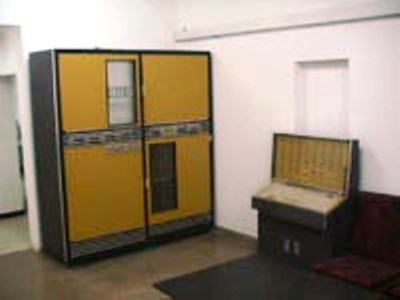Here is a photo of one of the Golem computers on which Arieh Warshel and Michael Levitt -- this year's Nobel Prize in Chemistry winners, along with Martin Karplus -- did much of their original work.
My dad was a computer programmer at that time, so I have some idea of what their work must have entailed. To this science writer, that makes their feat nothing short of amazing.
The Golem, by the way, which is preserved in the basement of the Weizmann Institute's mathematics building, was not the first computer at the Institute. The WEIZAC (below) was built at the Institute in the 1950's, at a cost of one fifth of the Institute's budget.
More like this
In the recent incarnation of Battlestar Galactica, the cylons were a human creation who turned on their creator.
Tarsiers are prosimian primates, sharing their primitive grouping with lemurs, bushbabies and the aye-aye.
Well before I was a footnote in a list of popular science blogs, I started out into the world of weblogging by starting a book log, which I still maintain, sort of.


Did they at least have a card reader?
I'm pretty sure that by the end of the 1960s they would have been using printouts on "computer paper" -- those long perforated stacks with the holes on the edges.